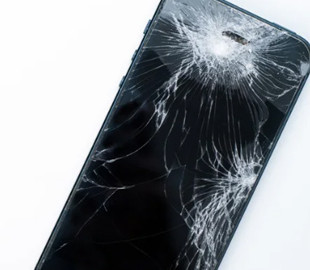
Modern smartphones — these are complex and expensive devices that we use every day. One of the most vulnerable elements of any smartphone is its display. A protective glass is used to protect the screen from scratches, cracks and other damage.
When choosing a protective glass for your phone, pay attention to the type of glass, its thickness, hardness, availability of additional coatings and compatibility with your device.
Don't also forget about the reviews of other users and  Product ratings. A high-quality protective glass will help keep your smartphone screen in excellent condition and extend its life.
But this is far from all the things that need to be considered, so let's take a closer look at the main types of protective glass , their characteristics and selection criteria.
Thickness
Usually, the thickness of protective glass varies from 0.2 mm to 0.5 mm.
Thicker glass provides better protection, but may be less sensitive to touches. Thin glass (0.2 mm — 0.3 mm) provides better sensitivity, but is not as reliable.
Hardness
Coatings play a key role in providing additional functions and increasing the overall quality of protective glass. Let's consider the three main types of coatings: oleophobic, anti-reflective and antibacterial, which make protective glass even more effective and convenient to use.
Oleophobic coating, for example, is indispensable for those who want to keep their smartphone screen clean and free of fingerprints. This coating creates a smooth layer that prevents fat particles and dirt from sticking to glass surfaces. Thanks to this, users can more easily clean the screen and enjoy a clear image without permanent smudges and fingerprints. The oleophobic coating also reduces friction, which makes using the touch screen smoother and more pleasant.
The anti-glare coating, in turn, is aimed at reducing glare and improving the visibility of the screen under bright light. It minimizes the amount of reflected light, which is especially useful for those who often use their smartphone on the street or in bright lighting conditions. Anti-glare coating provides a more comfortable viewing of content on the screen, reducing eye fatigue and improving the overall user experience.
Antibacterial coating is becoming more and more popular due to the growing attention to hygiene and health. This coating uses special materials that reduce the growth of bacteria on the surface of the protective glass. It can be especially useful in modern conditions, when smartphones are used constantly and come into contact with various surfaces.
Criteria for choosing protective glass
Make sure the glass fits your smartphone model. It is important that the cutouts for the camera, speakers and sensors match. Non-original or poorly selected glass can interfere with the operation of sensors or distort the image.
Quality protective glass should be as transparent as possible, not distort colors and not reduce sensor sensitivity. Some glasses have additional layers to improve image quality and protect your eyes from harmful blue light.
Ease of installation
Some screen protectors come with a self-installation kit that includes an alcohol wipe, microfibre and dust removal stickers.
This  ;facilitates the installation process and minimizes the formation of air bubbles. Choose kits with detailed instructions or video instructions.
Reviews and rating
Before buying, you should familiarize yourself with the reviews of other users and ratings of the product. This will help you choose quality glass from a reliable manufacturer. Read reviews on several platforms and specialized technical forums. Famous brands often guarantee high product quality. For example, brands like ZAGG, Belkin, or Spigen have a good reputation in the protective glass market.
Some manufacturers offer a guarantee for their protective glass. This can be useful in case of defects or damage to the glass during installation.

